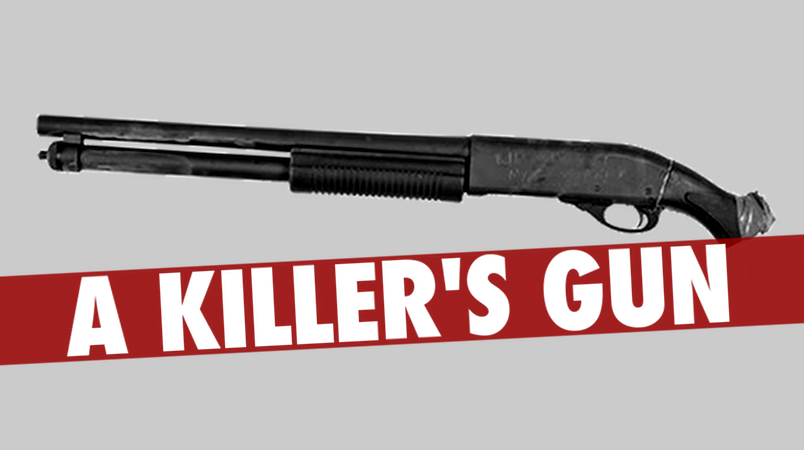Updated: September 30, 2013, 10:51 AM
The Remington Arms Company was born on a shooting field in the fall of 1816, when a young Eliphalet Remington II entered a shooting contest with a flintlock rifle of his own design. He came in second in the contest and, the legend has it, other contestants quickly asked Remington to make rifles and barrels for them. As the company that still bears the Remington name now brags, “before Eliphalet left the shooting field, he was in the gun business.”
On Sept. 14, Aaron Alexis, who had recently moved to the Washington, D.C. area, paid a visit Sharpshooters Small Arms Range in Lorton, Va. He rented a rifle and purchased ammunition, and then spent some time on the practice range. Afterwards, he asked about buying a handgun, but was told he could only buy one if he had it shipped to his home state (in this case Texas) through another federally-licensed gun store. Alexis decided to buy a shotgun instead. He settled on a Remington 870 and also bought two boxes — 24 shells — of ammunition. That same day, he bought a hacksaw at a Northern Virginia home improvement store.
At 8:15 a.m. on Sept. 16, Alexis crossed a hallway on the fourth floor of the Washington Navy Yard’s Building 197 holding a Remington 870 shotgun. The gun had been altered. Its barrel and stock had both been sawed off, making it shorter. Purple duct tape had been wrapped around the end of the stock. And short phrases had been etched into it. On the barrel were the words: “End to the torment!” On the right side of the receiver were the words: “Not what yall say!” And on the left side of the receiver were the phrases: “Better off this way!” and “My ELF weapon!” At 8:16 a.m., Alexis shot his first victim.
The Remington 870 that Alexis chose to buy was not itself unusual. Since its introduction in 1950, the 870, with its dozens of sub-variations, has become the best-selling shotgun in history. Over 10 million have been made. Earlier in September, a lawyer representing Sharpshooters Small Arms Range told TPM that the particular 870 sub-variation Alexis purchased was a 12-gauge Remington 870 Express Synthetic.
Here’s Remington’s description of its Model 870 Express Synthetic 18″:
An ideal 12-gauge utility gun featuring an 18″ fixed Cylinder choke barrel, single front bead sight, non-glare matte finish, and choice of 5-shot or 7-shot capacities. The Model 870 Express Synthetic is an excellent choice as a permanent camp shotgun or as the foundation for your own personalized design.
Unlike a rifle, a shotgun has a smooth-bored barrel, meaning that the projectile isn’t spun in flight. Shotguns are generally used to fire multiple small, round projectiles, larger shot like buck shot, single round balls, or cylindrical slugs.
The history of pump-action shotgun in America began shortly before the turn of the 20th century, as author Nick Hahn explained in The Gun Digest Book of the Remington 870.
“One might be tempted to say that the popularity of the new pump was that it held more rounds than the side-by-sides Americans had been going afield with for so long,” Hahn wrote. “Although that undoubtedly played a part in the design’s success, the much bigger advantage was that a quality pump shotgun could be made and sold for much less than what it cost to make a comparable double gun.”
While it had several offerings in production, by the late 1940s Remington became concerned about its competitiveness in the pump-action shotgun market. In 1947, a team of Remington designers and engineers including L. Ray Crittendon, Phillip Haskell, Ellis Hailston, and G.E. Pinckney began developing a new model. As Hahn wrote, the group “went to work, and what [it] came up with was a shotgun that was modern, strong, and reliable, yet inexpensive enough that it could be purchased by just about everyone.” Remington announced the Model 870 “Wingmaster” in January 1950. By 1966, the company had sold a million of them.
According to a history of Remington 870 compiled by The Remington Society of America, the company put out sub-variations of 870 regularly over the next several decades. In 1987, Remington introduced the Model 870 Express, a lower cost model, “which differs from the standard Model 870 line only in exterior matte finish and low luster hardwood stock and forend.” In 1950, according to Hahn, the standard model Browning autoloader shotgun cost $109, while the standard Winchester Model 12 pump-action shotgun cost $84.95. These days, online stores list 870 Express models around $350.
Remington maintains a plant in Ilion, N.Y., on property the company first acquired in 1828. But it is now headquartered in Madison, N.C. While it has produced everything from typewriters to sewing machines during its history, Remington now focuses on “sporting goods products for the hunting and shooting sports markets, as well as military, government and law enforcement markets” and is the only U.S. manufacturer of both firearms and ammunition.
Remington became a wholly-owned subsidiary of DuPont in 1980. But in 2007, it was quietly bought for $370 million by Freedom Group, the umbrella company that owns a number of iconic firearm brands, and which is in turn owned by Cerberus Capital Management, a New York City private equity firm. Freedom Group and Cerberus were last in the news in December, after the school shooting in Newtown, Conn., in which the shooter, Adam Lanza, used an AR-15 rifle made by Bushmaster, another Freedom Group company. A few days after the shooting, Cerberus announced that it planned to sell its stake in Freedom Group. No sale has yet been publicly announced.
Photo via FBI. Composite by TPM’s Nick R. Martin.
Correction: This article incorrectly stated in one instance that the Model 870 “Wingmaster” was announced in January 1650. It was 1950.






